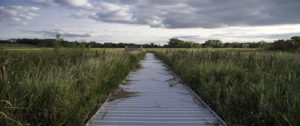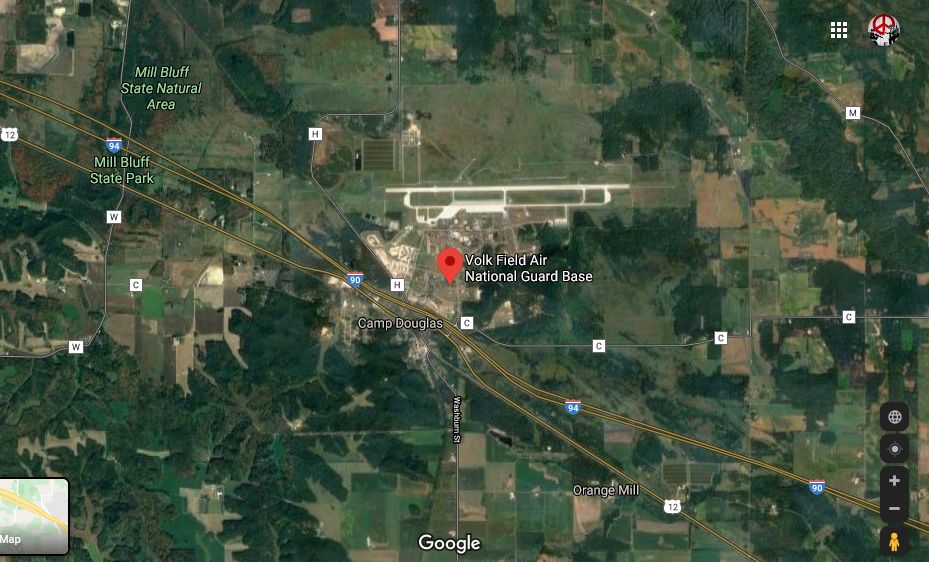Air Force picks Truax for F-35 base; Madison opponents consider legal response
The Cap Times | 15 April 2020 | Steven Elbow
The Air Force’s decision, which comes after a three-year vetting process, clears the way for a squadron of 18 of the $100 million fighter jets at Truax to replace the Air National Guard’s aging F-16s starting in 2023.
“Putting F-35s at these two bases continues our transition into the next generation of air superiority,” said Air Force Secretary Barbara Barrett.
The Air Force also approved an airfield in Montgomery, Alabama, for the state-of-the-art fighter planes.
The decision comes amid concerns about noise, pollution and racial disparities raised in the Air Force’s own assessment of the site, and objections from local government officials and neighborhood groups.
Wednesday’s announcement doesn’t come as a surprise, as the Air Force picked Truax as its “preferred alternative” in February, despite several issues noted in its environmental impact statement. And Congress last fall authorized $34 million for F-35-related construction at Truax for flight simulators and fighter alert shelters, with another $86 million expected in coming years for 17 other F-35 projects.

The prospect of louder and more numerous flights over densely populated areas has wrought bitter divisions in the community as opposing groups debate whether the economic and national security benefits are worth the environmental, social and economic costs.
The environmental impact statement released by the Air Force in February acknowledges that surrounding neighborhoods will be subjected to increased noise and a 47% increase in the number of flights, and that the impact will fall mostly on some of Madison’s most diverse neighborhoods.
It estimates that that 1,318 households and 2,766 people would be exposed in their homes to average noise levels of at least 65 decibels — a measure that averages noise events as high as 108 decibels, or about the loudness of a chainsaw, with the remainder of daily noise levels — and render 199 acres near the airfield as “potentially incompatible” with residential use.

Safe Skies Clean Water has hired the law firm Pines Bach to take the Air Force’s decision to court.
In a letter to Air Force officials in March, attorneys Christa Westerberg and Aaron Dumas outlined the legal avenues the firm could pursue, including the spread of PFAS contamination from construction. PFAS, a man-made chemical linked to cancer and other serious health issues, has been detected in high concentrations at the air field and is believed to be the source for contamination of fish and water in nearby Starkweather Creek.
The letter also cites environmental justice issues, claiming that the Air Force did little to give voice to disadvantaged people who live near the airfield. The attorneys criticized the military for holding a public meeting on the issue across town at the Alliant Energy Center, several miles from their homes.
“By its own admissions in the final EIS … the Air Force made no such targeted efforts, and further required mobility-limited, impacted residents to drive 8 miles just to attend the meeting that the general public was afforded,” the letter states. “It thus did not adequately apprise itself of the disproportionate noise and pollution impacts of the project on children and minority populations.”
Supporters say the decision will bring dozens of jobs to the area and secure the future of the base.
“The F-35A basing decision is much-needed positive news for Greater Madison,” said Zach Brandon, president of the Greater Madison Chamber of Commerce, a staunch backer of the fighter jets. “From generating $100 million in annual economic impact to their extraordinary work responding to the COVID-19 outbreak, time and again we have seen firsthand the tremendous value the 1,200 Airmen of the 115th Fighter Wing bring to our community.”
The Badger Air Community Council, a group supporting the planes, said more than 5,000 people have registered support on the group’s Together Truax website.
“We are very grateful for the overwhelming community engagement and support in this very lengthy process,” said the group’s board chairman, Marvin Siegert.
The Madison City Council and Mayor Satya Rhodes-Conway have gone on record opposing the jets, and Dane County Board members introduced a resolution to do so late last month.

“Residents of our Districts have overwhelmingly opposed this action in writing by submitting thousands of comments to the Air Force and Common Council, and in person at listening sessions, community meetings and Common Council sessions,” says a statement from alders Marsha Rummel, Rebecca Kemble, Syed Abbas and Grant Foster. “They have expressed serious concerns about their health, quality of life in the neighborhoods, quality of education for children in nearby schools, the quality of their drinking water, and their major investments in their homes.”
The state Legislature last fall passed a bipartisan resolution in support of bringing the jets to Truax, though several local lawmakers opposed the move.
State Rep. Chris Taylor, a Democrat who represents east-side neighborhoods that could be impacted, said that of several sites under consideration — including sites in Idaho, Florida and Michigan — Madison was the worst choice.
“The Air Force’s own Environmental Impact Statement showed that out of the five locations under consideration, the people, land and water of Madison would suffer the worst impacts,” she said.
Taylor said the decision threatens to exacerbate racial disparities in a city where those disparities are already among the worst in the nation. And she said noise from the jets will disturb several schools and more than a dozen daycare facilities near the airfield.
“It is absolutely shameful that the Air Force is insisting on placing these jets, which typically have not been put smack in the middle of a city, in densely populated communities that will be severely harmed,” she said. “An estimated 60,000 individuals live within three miles of the airport. Instead of listening to our community, the Air Force is intent on foisting these jets on a place they are not wanted.”
Democratic U.S. Rep. Mark Pocan, who represents Madison, said he’s been pressing the Air Force for information about how the military will compensate homeowners who require soundproofing and other measures to deal with the noise.
“We’re hoping now that these jets are coming to Truax, the Air Force can be more forthright with the information we’ve requested over the last nine months,” he said. “Thus far, my concerns have never been directly addressed.”

The Guard’s adjutant general, Maj. Gen. Paul Knapp, said the military wants to work in collaboration with local communities.
“I look forward to our partnership with the City of Madison and surrounding communities,” he said. “Through collaboration, I’m confident we will continue to be good stewards of the communities in which we work and live.”

